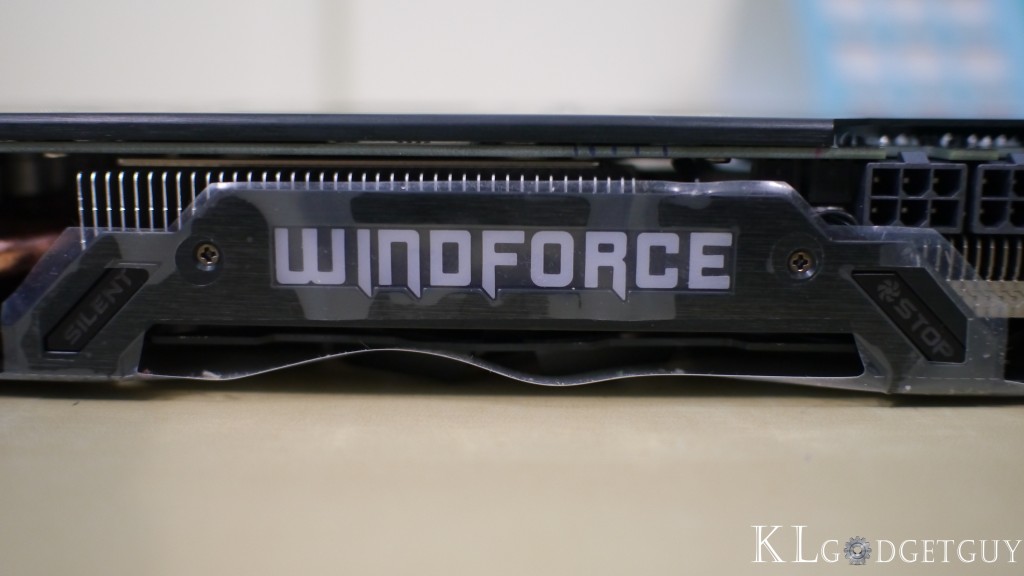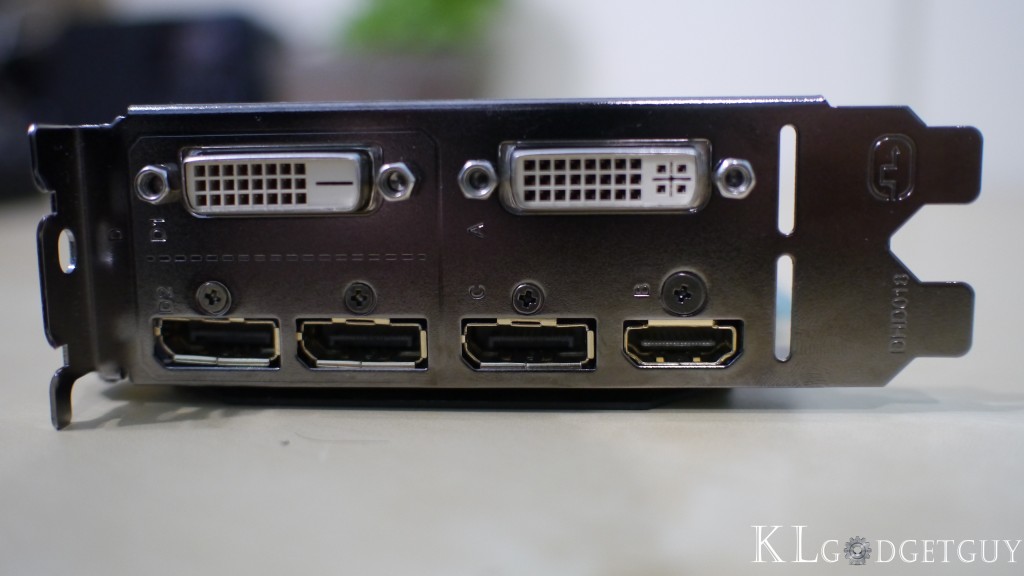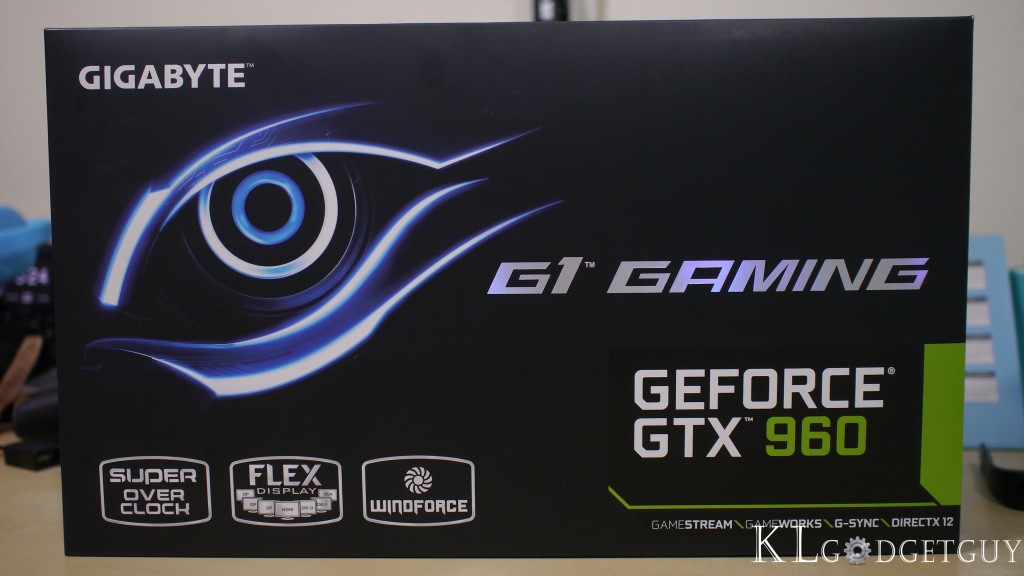We’ve seen NVIDIA launched its new Maxwell powered GeForce GTX 980 and GTX 970 a few months back and its power efficiency and performance has been dramatically improved over its previous Kepler based GPUs. The company has now released a mid-range model from its flagship, the GeForce GTX960 is what the company calls it the ‘Sweet Spot’ graphics card for gamers who doesn’t want to spend too much on a GPU yet without compromising too much graphics quality and performance for the cash that you are paying for. And today, I have got GIGABYTE’s very own GeForce GTX 960 G1 Gaming 2GB GDDR5 graphics card in the labs and since this is our very first GPU review on the site and given that this is a card meant for intermediate gamers, our test bed here isn’t pack with the most powerful and recent muscle here. So here goes:
Test System Hardware Specifications
Processor: Intel Core i5-3470 3.2GHz Quad-Core, up to 6MB cache, Turbo Boost up to 3.6GHz
RAM: 8GB Kingston ValueRam DDR3-1333MHz
Motherboard: GIGABYTE Z77P-D3
Harddisk: Kingston SV300 120GB SSD/WD Green 500GB 7200RPM HardDrive
Power Supply: CoolerMaster PowerXtreme 550W
GIGABYTE GeForce GTX960 G1 Gaming Specifications
Core Base Clock: 1241MHz (Ref: 1127)
Core Boost Clock: 1304 MHz (Ref: 1178)
Core/Process: GM206/28nm
Memory Clock: 7010 MHz
Memory Size: 2048 GDDR5 – 128Mx32
Bus Type: PCI-Express 3.0
Memory Bus: 128-bit
CUDA Cores: 1024
Hardware Design
Gamers familiar with GIGABYTE’s signature G1 GAMING graphics card will not be a stranger to the card’s design, the PCB is long and heavy just like what you would expect from a high performance gaming card. The card’s cooling fan looks pretty cool and promises a great cooling performance as it sports the company’s unique WINDFORCE cooling technology, you’ll find copper heatsink underneath that is connected to the core of the GPU.
GIGABYTE’s GeForce GTX960 utilizes a 6-phase GPU power design, which is able to accept a maximum TDP of 160W (Ref: 120W) and the design results in a better load balance with lower temperature, pretty useful if you are the person who does overclocking and want to ensure that the GPU doesn’t give up too easily.
According to GIGABYTE, the WINDFORCE Cooling Fan design will also allow 23% more air flow and it features a new Fan Stop Mode, in which the fans will come to a stop once you are on idle and not running any graphics demanding applications while its temperature is below 43 degree Celsius. Since our test bed is in a close cramped chassis, the GPU maintains a pretty cool 47 degree Celsius when idle and up to 70 degree Celsius on full load, fan speeds are really incredible at an average of 1600RPM on load and when it gets idle, it goes down to a crazily low 22RPM, hardly even spinning at all.
GIGABYTE isn’t stingy on ports as well, the GTX960 G1 Gaming has a pair of DVI-D and DVI-I ports, 4 DisplayPorts, and 1 HDMI 2.0 port, it sports the company’s Flex Display feature which is intelligent enough to automatically combine four multiple displays into one single huge display if you have intended to that.
In conclusion, NVIDIA has certainly put on hard work on making Maxwell really standout in the competition, not only the company focuses on performance and efficiency, the GTX960 features the all new Maxwell features which include Dynamic Super Resolution (DSR) that brings 4K quality gaming to a Full HD screen, MFAA that improves anti-aliasing performance in games, and NVIDIA GameWorks that brings incredible graphics quality improvement into supported games.
And with GIGABYTE’s reputation of having great factory overclocked graphics card, we are hungry to try out the performance of GIGABYTE’s new baby.
Initial Tests
We received our GIGABYTE GeForce GTX960 G1 Gaming in less than 48 hours and have done some pretty quick tests on some games here without overclocking it. In a couple of weeks, we’ll be updating this section on more games that we’ve tested with the graphics card.
GRID AutoSport
One of the best racing games from CodeMasters that features extremely beautiful graphics while not requiring strong graphics power in order to have a smooth experience, the GTX960 performs beautifully in the game when we have DSR enabled at 4K resolution on mostly High graphic settings, it delivers and impressive average 35FPS and a minimum 27FPS in our tests, it should look even more impressive when you are on a real 4K display
Far Cry 4
Similar to Crysis, the Far Cry series have been one of the most GPU tested games in the industry and with the fourth iteration of the game, its graphical requirement becomes more hungry than ever. The GeForce GTX960 performs decently if we didn’t push its settings too hard, while it fails to run in DSR 4K resolution, it still has a pretty tolerable average 27FPS on Full HD resolution with High graphics setting, it won’t do good for hardcore gamers but for the average joe who seldom play games, the GTX960 is going to suffice. One thing to note, turn on all the GameWorks effects like Fur, Occlusion and etc. and you’ll experience superb realistic graphics detail.
Tomb Raider
Now, one might complain that this is an old game, but guess what? The GeForce GTX960 isn’t able to handle Ultimate graphics yet in 4K resolution, which results in a terrible 11FPS on its main menu and it should be worse in its gameplay. However when we tried it on Full HD resolution with Ultimate graphics setting, the game’s benchmark provides us an impressive playable average 38.9FPS and minimum 18.9FPS frame rate, which still isn’t too bad.
Verdict
While time is short, we have yet to compared the GeForce GTX960 to the rest of the competition however we dare ourselves to be able to conclude that GIGABYTE has already done a very decent job in improving NVIDIA’s reference design, keeping the GPU quiet most of the time and having some pretty impressive overclocking capabilities (we’ve tested but yet to finalize results), the GTX960 is truly a ‘sweet spot’ graphics card for gamers who simply want their games to look and play good on an old but modern PC system, it is expected to retail at USD$199, which costs $20 more than its nearest competitor the AMD Radeon R9 280, while we’ve kept in mind on what GameWorks can do to improve graphics quality on games, we’ll definitely take a look into what its competitor has to offer over itself.







